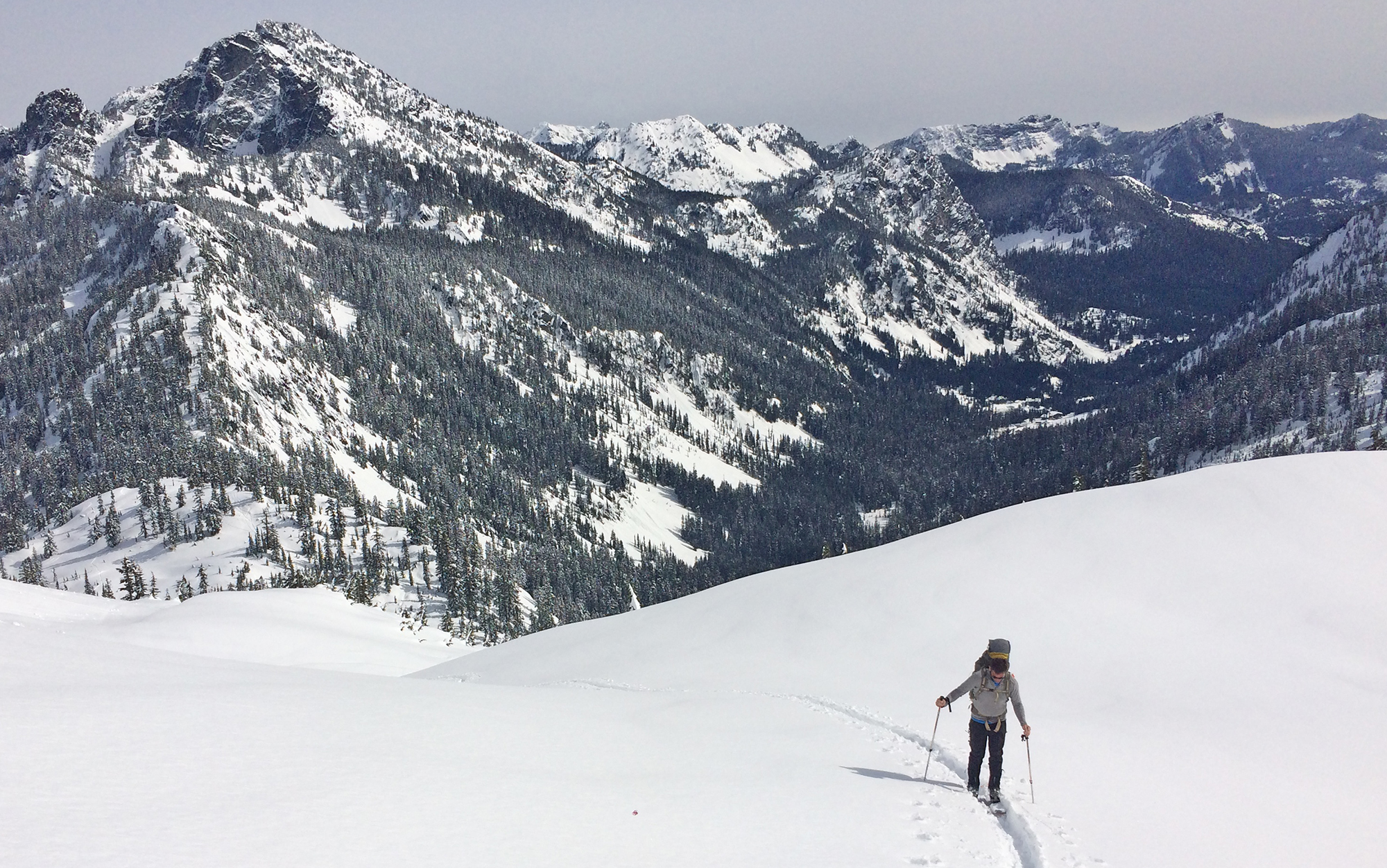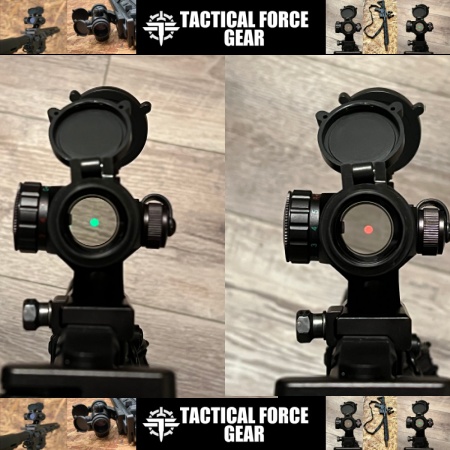We may earn revenue from the products available on this page and participate in affiliate programs. Learn More ›
Thermal underwear is known by many names — long johns, base layers, long underwear, skivvies, or even britches (for my Southern friends). No matter what you call them, they are a staple for anyone still recreating outdoors after the leaves fall, the snow flies, and the mercury drops. The best thermal underwear for men creates a base level of warmth retention underneath the rest of your insulating and shell layers.
Thermals have to be a great team player by working with all our other layers to minimize heat loss without compromising movement. But they also have to work as a stand alone layer when we get hot and strip or crawl into a sleeping bag at the end of the day. Since we demand so much versatility from such a simple piece of clothing, I put all kinds of thermal underwear for men to the test to see which ones would stand out and keep the shivers at bay.
How I Tested the Best Thermal Underwear
I tested the best thermal underwear for men by wearing them for cold activities like winter trail runs, snowshoeing, ski touring, mountaineering, ice climbing, high altitude climbing, and sleeping in cold weather. I used these thermals as the foundation for layering systems that involved more than four extra pieces of clothing and as isolated pieces under a pair of shorts or with nothing else in a sleeping bag.
During testing, I focused on whether or not the thermals restricted necessary movement during activities, comfort while sleeping, overall warmth, and performance with or without layers over the top of them. As a disclaimer, I know that claims of odor reduction abound in the thermal underwear space, but there are a lot of variables that can affect the odor of used clothing so I’ll just assure everyone that there was no irregular, obvious, or notable stenches coming from any of the samples even after lots of use.
Conditions while testing ranged from crisp summer nights and mornings in the alpine of the Pacific Northwest to subzero, “everything is frozen but we’re still going” days in Colorado and Alaska. I used these thermals on rainy days, snowy days, clear days, and days where it did all of that in a span of a few hours.
Best Thermal Underwear for Men: Reviews & Recommendations
Best Overall: Smartwool Classic Merino Hoodie and Bottoms

Sean McNally
See It
Pros
- Works well as a base and stand alone layer
- Sleeps comfortable and warm
- Hood provides integrated head insulation
Cons
- First few times wearing it can be scratchy
- Moisture freezes to the outside when wearing stand alone
Key Features
- Weight: 11.22 ounces (hoodie) and 8.04 ounces (bottoms)
- 100 percent merino wool
- Elastic waist band
- Traditional fly opening
- Hood
Oldie? Goodie? It’s both. Smartwool knows how to stick to what works with the Classic Merino Hoody Top and Bottoms. Across the most common ways I use thermals, I couldn’t really find an activity or situation where the Classic Merino left me wanting more.
The layers didn’t restrict any necessary movements while running, trudging up glaciers, high stepping while climbing, or thrashing around in the nervous, fitful sleep that precedes summit day. They felt like a welcome addition to the necessary insulating layers when I stood around belaying or resting in mountain shadows, while also performing well as a singular layer or under just a pair of shorts while running or hiking.

I prefer the hooded version of the top for a number of reasons like keeping my head and ears warm during activities or under a helmet. But the biggest advantage to this feature shows up when it’s time for bed. You can keep your mouth out of your sleeping bag to make sure you breathe well and accumulate less condensation, but your face won’t get cold. With the hooded thermal, you can pull the hood down over your eyes and nose while a buff covers your chin to keep those sensitive parts warm.
Pulling the hood down over your eyes also helps if you’re trying to sleep in the land of the midnight sun or catch some rest before sundown when your alarm is set for an alpine start, like 12 a.m. or earlier. I’ve tried various eye covers for this but they all tend to put pressure on my eyelids while the hood is loose enough to avoid discomfort and still provide the necessary warmth and light blocking.
And most importantly, the best thermal underwear for men promises to keep you warm no matter how you’re using them. I’ve used base layers that claim to be the lightest and fastest while they regulate your temperature to keep you cool all the time. Call me old school but I think the essential task of thermal underwear is keeping you warm.
I did find that the Smartwool Classic merino thermals hold onto snow if you’re going to wear them as a stand alone layer. This didn’t bother me too much and I tended to wear a shell anyway on high precipitation outings. Additionally, they are a bit scratchy right out of the package but only one hike and a wash solved that problem, and now they’re a warm and comfy go to for my cold weather kit.
Best Value: REI 185 Merino Base Layer Top and Bottoms

Sean McNally
See It
Pros
- Works well under pants and shorts
- Allows for full hiking range of motion
- Simple design and affordable
Key Features
- Weight: 7.4 ounces
- 100 percent merino
- Gusseted crotch
The REI 185 merino base layers are a simple product for a good price. They’re particularly suited for hiking and backpacking. If you like to put one foot in front of the other to see all the wonderful places your feet can take you, don’t over think it and go with the REI 185 thermal underwear for men.
They will hang with you on the trail under some hiking pants with a heavy pack and a belt or just a light pair of running shorts for the day. These thermals perfectly handle high steps or rock hopping boulders, while also keeping you warm for short breaks to snack or check the map. And they’re great if your hike takes you overnight and you want some added warmth while sleeping because they don’t squeeze your legs.
Another great thing about these thermals is that you can pick them up near all kinds of hiking areas because REI stores are all over the country. That also means that you can return them near all kinds of hiking areas because of REI’s famous return policy. I have personally taken advantage of this return policy with these thermals, as I’ve worn out the crotch on a few pairs after tons of trail mileage over the years.
The REI 185 merino base layers are a classic for the minimalist hiker, or outdoorsman on a budget that still values merino wool. When the trail is calling but the temps are falling, don’t get hung up on features and marketing, stick to the basics.
Best Lightweight: Rab Synchrino Long-Sleeve Tee and Leggings

Sean McNally
See It
Pros
- Light and stretchy so they don’t restrict movement
- Dry quickly
- Layer well
Cons
- Fit a little tight
- Not as warm as other thermals
Key Features
- Weight: 5.7 ounces (long-sleeve) and 4.4 ounces (leggings)
- Merino/Polyester blend
- Gusseted crotch
The Rab Synchrino thermals are everything you want for smash and grab missions into the mountains. The phrase, “all gas no breaks” comes to mind when you’re pulling these things on as they feel like almost nothing compared to other thermal underwear for men. The stretchiness of the fabric allows for excellent range of motion so you won’t notice them pulling at you when high-stepping or reaching, and they play nice with other layers as they don’t bunch up or create pinch points anywhere.
They also dry quickly, which is nice if you get carried away and accidentally push to the point of sweating. I’ve had to strip off other thermals when I made this mistake to avoid having a wet layer on my skin, but the Synchrinos rebounded from this problem quickly with proper ventilation.
While these thermals do add an extra level of warmth when you’re rambling around in the cold, I would reach for something more heavy-duty if it’s truly frigid out. I found these were great for continuous movement activities like Nordic skiing or running when the temperature was at or above freezing. But, remember, anything this light will eventually hit it’s limit for insulating so if it gets much colder than that, plan appropriately or get ready to shiver.
These were also very comfortable for sleeping although they do fit pretty tight so if that bothers you, you may consider a roomier option. But if counting ounces and pairing down the kit is your idea of fun, the Rab Synchrino thermals might be the best thermal underwear for you.
Read Next: Best Winter Running Gear, Tested and Reviewed
Best Heavy Weight: Patagonia R1 Thermal Crew and Bottoms

Sean McNally
See It
Pros
- Warm
- Roomy chest pocket keeps batteries warm for essential electronics
- Thumb loops helps with layering
- Fits and sleeps like pajamas
Cons
- Bulky underneath layers
- Easy to over heat
Key Features
- Weight: 11.8 ounces (crew) and 11.7 ounces (bottoms)
- 91 percent recycled polyester, 9 percent spandex flat-faced Technostretch fleece
- Chest pocket
- Thumb loops
The R1 thermal underwear for men is a base layer version of the mid-layer R1 grid fleece that has become a favorite among alpine climbers. Patagonia seemingly slimmed down their immensely popular grid fleece. It provides the same familiar warm embrace as the mid-layer, but comfortably buried under four more layers or acting as your pajamas inside a mummy bag.

I appreciate that Patagonia keeps the fit on the R1 thermal underwear a little on the loose side because they are so heavy duty that they would restrict movement if sized super tight. Instead, these thermals allow for big steps and long reaches with relative ease. I was able to ice climb, alpine climb, and drag an expedition sled without feeling like I was fighting my underwear, which was a welcome relief after trying other products on the market. Because of this fit, the thumb loops are essential when layering. Stuffing your arm through an outer layer with your thumb through the loop keeps the fabric from bunching and creating uncomfortable pressure points throughout the day.

These thermals shine when it comes to cold sleeping. Whether it’s high altitude or just low temps, the R1 thermal underwear is a great layer when it comes time to strip down and crawl in. The addition of the chest pocket is a great design perk, especially because Patagonia smartly decided to make it huge. On cold expeditions, we often decide what will go in our sleeping bag, what will be left outside to freeze, and what is so important that we need to zip it into a chest pocket to keep warm.
It’s a nightly triage exercise that any expedition goer is familiar with. I often keep my phone and my emergency beacon in my chest pocket so that the battery won’t freeze as these are essential items. It’s so large I have even added a stove pump to my normal stash when it got really cold so the gasket wouldn’t freeze and break, leaving me with an inoperable stove.
It’s obvious that Patagonia knows this product will be used for sleeping in the cold. The R1s provide heavy duty warmth. These thermals are designed for activity when your only concern is how many layers to add rather than take off. It’s easy to overheat while wearing these if you misjudged how cold it would be. I only wear these when it’s time to climb or hike in the frigid shade of the mountains or thin high altitude air.
Best for High Intensity Activity: Icebreaker Merino Blend Zoneknit 260 Seamless Top and Tights

Sean McNally
See It
Pros
- Does not limit range of motion for high output activities
- Seamless design allows for comfortable layering
- Works well with mountain boots and ski boots
Cons
- Tight fit can be uncomfortable while sleeping at times
Key Features
- Weight: 10 ounces (top) and 7ounces (tights)
- Merino wool blend
- Mesh zones in armpits and crotch
The Icebreaker Merino Blend 260 Zoneknit thermals are a go to for winter sports where you’ll be on the move most of the day with limited idle time, transitions, or breaks. These thermals are great for running, ski touring, cold alpine climbing, or any other activity where you don’t want your underwear limiting your range of motion.

The 260 Zoneknit thermals move as smooth as butter during a wide range of winter activities and movements. They have quickly become my go to for long days in the mountains as I’ve never worn thermals that move with quite this much ease. The seamless design interacts with other layers well and operates as a kind of second skin at the base of your clothing system. The bottoms also layer well so they don’t interfere with boot fit when mountaineering or skiing, which can be a problem with other thermals.
I was a little worried they would run cold since the design includes lighter fabric in the armpits and crotch to prevent overheating. It seems to me that if you’re trying to prevent heat loss on a cold day, features like this work against your overall goal. But I was pleasantly surprised on frigid morning ski tours that I felt warm with just these and a pair of soft-shell ski pants. A similar set up for snow climbing in shady couloirs worked just as well which is nice because too many bottom layers can get bulky and lead to catching your pant legs with crampons.
To get such streamlined performance while moving, the 260 Zoneknit fits tightly. I appreciate that aspect while I’m on the go, but they aren’t the most comfortable when it’s time to strip down and crawl into a sleeping bag. At the end of a long day I really just wanted to take these off and get into something with a little more room. That’s not a huge drawback for day trips but can be annoying if you are trying to change in your tent while it’s cold. But if your main concern is moving fluidly throughout the day and you don’t mind a tight fit at night, the Icebreaker merino blend 260 Zoneknit thermals offer an uninhibited range of motion.
Best for Start and Stop Activity: Paka Thermal Crew and Bottoms

Sean McNally
See It
Pros
- Fit is very comfortable
- Stretches so as not to restrict movement
- Thumb loops on the thermal crew allow for comfortable layering
- Still warm even at rest
Cons
- Material felt scratchy at first
Key Features
- 85 percent Royal alpaca
- Crew has thumb loops
Winter activities like resort skiing or ice climbing can require just as much time sitting around in the cold as they do movement and exertion. Riding a long lift up to the top of the hill or hanging in your harness belaying your partner is a lot of chilly down time. This creates quite a layering conundrum when it’s time to shred the slope or swing your tool as you go from cold to hot and back to cold again multiple times in a single day. Luckily, Paka’s thermal underwear for men were made for outings with abrupt starts and stops.

I found that the Paka thermals kept me comfortable and warm while riding a ski chair or belaying and yet I didn’t overheat when it was time to start working hard in between the rests like I do with other thermals. Apparently, the 85 percent alpaca wool instead of merino wool affords a different level of temperature regulation. I’m usually skeptical of claims that contradict each other, such as warm and breathable. But I legitimately noticed the difference here when testing the Paka thermals as I felt well insulated at rest but didn’t want to tear them off of me when it was time to get going.

The fit and stretch of these thermals also moved well with my body and didn’t make me feel like a sausage when I put them on. The thumb loops on the crew are a nifty addition as it allowed me to stuff my arms in and out of jackets without bunching up the sleeves.
The only down side I found in my testing was that the material felt a little scratchy on my skin. This got better after time and use, however, it still made the thermals a little bit uncomfortable for sleeping. But if you participate in a winter activity that requires long bouts of cold waiting around interspersed with intense effort, look no further than the Paka thermal crew and bottoms.
Best Expedition: Helly Hansen Lifa Merino Midweight Crew and Pants

Sean McNally
See It
Pros
- Layer well without being too tight
- Durable
- Comfortable while sleeping
Cons
- Heavy
- Can limit some movement
Key Features
- Weight: 12.3 ounces (crew) and 11.2 ounces (pants)
- 100 percent merino wool
- Flatlock seams
It isn’t something to brag about but climbers and skiers don’t change their underwear too often on expeditions. You’re usually so tired at the end of the day, you just strip down to your base layers and go to sleep. Then in the morning, you’re usually trying to layer up as much as you can even in your sleeping bag because it’s so cold out. So you want a pair of thermals that’s going to keep you warm day in and day out without too much thought. The Helly Hansen Lifa merino midweight thermal underwear for men are this kind of workhorse.

These thermals are comfortable under layers and while sleeping without being too tight, which is perfect for long term use because you really just want to use them as a warmer, second layer of skin that doesn’t rub or irritate you anywhere day after day. They also hold up to abuse. It usually doesn’t take long for me to wear holes in the crotches and knees of my thermals, but I’ve used these Helly Hansen thermals on multiple expeditions and they have continued to hold up.
These thermals are definitely on the heavier side so they aren’t meant for the light and fast crowd. You’ll also notice them when you’re trying to make long moves as they can pull at you a little bit. But the warmth and daily comfort that these thermals provide more than makes up for any small efficiency you may lose from their heft. So if you’re looking for the long haul trucker of thermals, I highly recommend the Helly Hansen Lifa merino midweights.
Read Next: Best Thermal Underwear for Women
How to Choose the Best Thermal Underwear for Men

Thermal underwear can be a confusing product to buy because it’s hard to tell different products apart. Promotional materials make claims about material, warmth, and design features but they all basically just look like the same long sleeve shirt and tights. That means there are some key details to look for that can help make your purchasing decision.
Material
Most good thermal underwear will be made out of material that still retains heat even if it gets a little sweaty. Usually, this means wool or some kind of wool synthetic blend. At the very least, a full synthetic construction will keep you from getting super cold from a wet base layer. Cotton underwear, even if long sleeved, can get wet and cold without drying fast. When you’re cold at your skin level, it doesn’t matter how many layers you throw on over the top, you’re in for a long shiver fest of a day.
Comfort
Base layers are meant to be worn next to skin. That means it’s very important that the piece doesn’t irritate your skin or bother you all day. You’ll never enjoy a beautiful winter outing if you’re scratching and adjusting constantly. I make note of how each pair of thermal underwear for men fit, but if you can try on the layers in a store with all the layers you plan to wear with it to make sure it fits your body type and skin sensitivity. Some people are allergic to certain fabrics and some people just find different fabrics uncomfortable on their skin. But there are plenty of options on the market so take the time to find the one that is most comfortable for you.
Read Next: The Ultimate Guide to Base Layer Fabrics
Care Instructions
Some thermal underwear have very specific care instructions for washing and drying to reduce shrinking. I’m the kind of guy that just doesn’t have the time or patience to have a separate laundry routine for my thermals so I tend to just throw everything in the washer and hope for the best. I have friends and colleagues, however, who meticulously wash and dry their thermals exactly to the manufacturer’s instructions. Figure out what kind of person you are and make your purchase accordingly. If you’re like me, you may want to find a pair that will hold up to machine washing. If you’re a serial rule follower, figure out what routine you’re comfortable with and make your choice from there.
Final Thoughts on the Best Thermal Underwear for Men
When the days get short and the temperature drops, recreating outside starts to take on a different flavor and requires a different set of tools than the summer months. Thermal underwear is a useful piece of winter kit to make sure you retain heat while keeping bulkiness to a minimum. No one likes going out there feeling like the Pillsbury dough boy, trying to move beneath endless layers of fleece and down to stay warm. So I recommend trying out some of the best thermals for men before you start your next chilly adventure and see if you can’t leave some of those cumbersome layers at home.
Read the full article here




